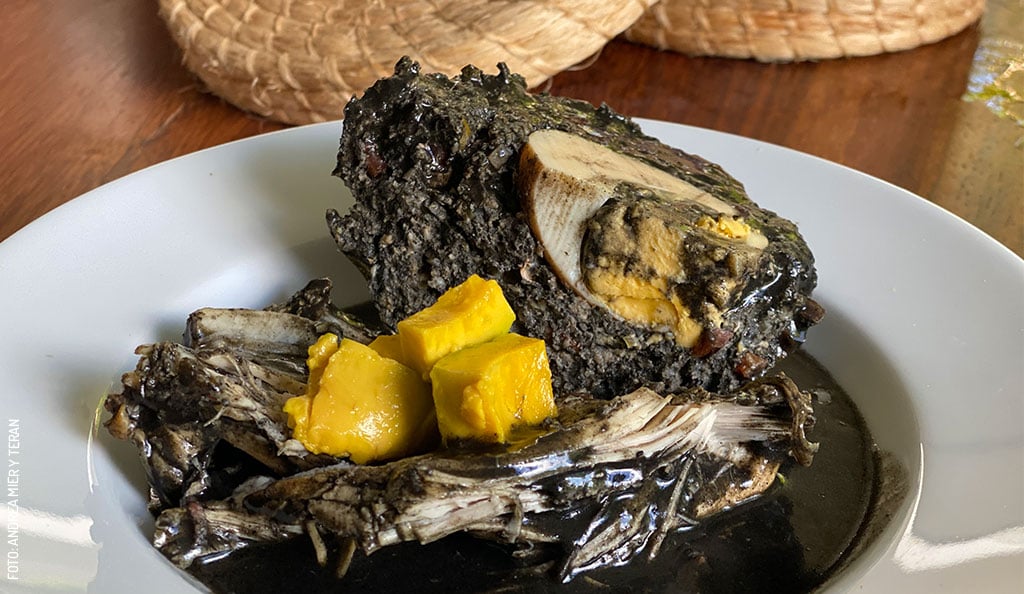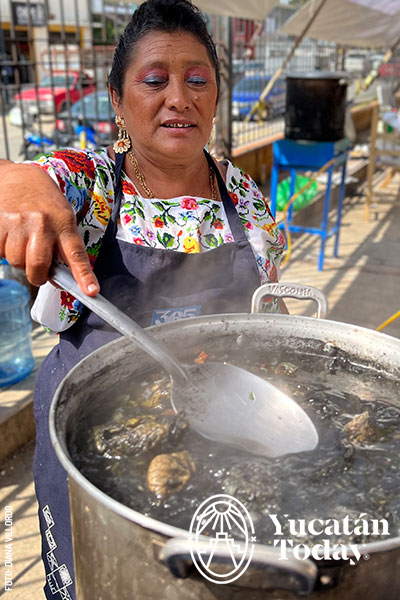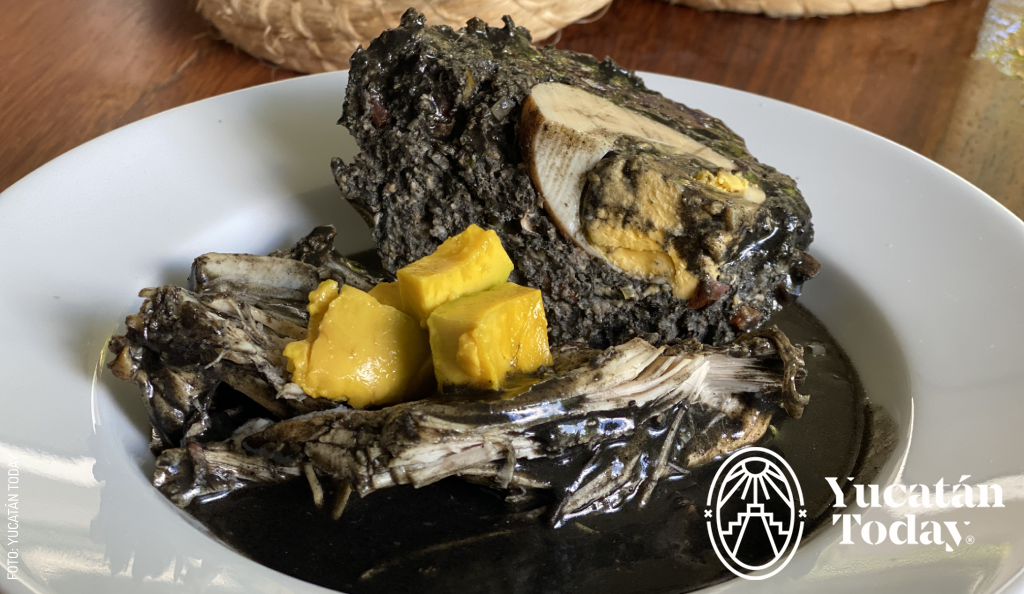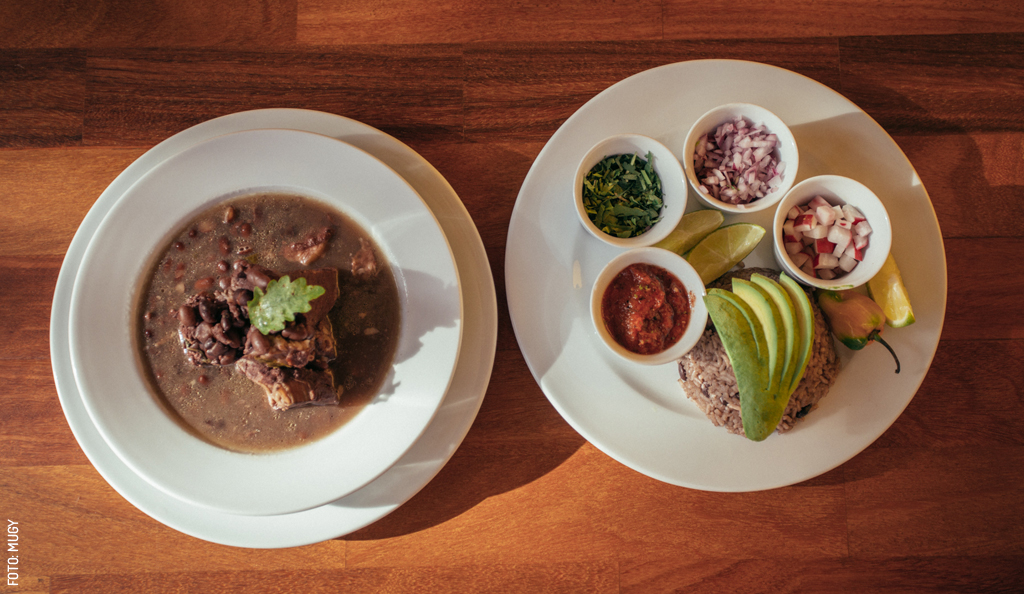
Recado Negro: The Ancestral Art of Fire, Smoke, and Maya Memory that Defines Yucatecan Cuisine
In the vast culinary tradition of Yucatán, a single condiment embodies the soul of mestizaje (cultural blending), patience, and knowledge passed down through generations: recado negro (black seasoning paste). This adobo, famous for its deep, intense color, aromatic complexity, and profound flavor, is more than just a kitchen staple; it's a true ritual connecting us to Maya roots and the cultural syncretism that defines the Península.
Origin and history
Recado negro traces its origins to the pre-Hispanic era, when the Maya used dried chili peppers as a base to give strength and character to their stews. The arrival of the Spanish introduced Old World spices, such as cloves and black pepper, along with garlic and onions. The result was a unique blend that, over time, solidified the paste as one of the most emblematic adobos of Yucatecan cuisine.
The secret of recado negro begins with the chili. Typically, chile de árbol or chawa ik chilies are used, which are scorched until completely carbonized in the hearth. This crucial step, known as tatemado, is essential for achieving the characteristic deep black color.
This isn't just a technical step; tatemado carries a ceremonial quality. In traditional kitchens, it’s performed patiently, allowing the smoke to permeate the air and the chilies to transform slowly. When burned, they acquire a deep, smoky flavor that, when combined with the other ingredients, creates an unforgettable paste.
In the state's inner towns, it is still customary to prepare the recado negro in the ancient way: the chilies are tatemados directly over charcoal, ground on a metate (grinding stone), and then mixed with spices.
The alchemy of spices
Once the chilies are ready, they are combined with a mixture of spices that lend complexity and personality to the seasoning. The most commonly used ingredients include clove, black pepper, allspice (also known as pimenta gorda or Tabasco pepper), cumin, and oregano. To this foundation are added garlic, onion, salt, and, in some recipes, a touch of achiote (annatto).
The classic process for creating the paste involves several fundamental steps:
- Tatemado or scorching of dried chilies: Chilies are placed directly over charcoal or a comal (flat griddle) until completely blackened.
- Boiling and soaking: The burnt chilies are boiled in water to soften their texture and then soaked for 24 hours.
- Grinding: The chilies are ground along with the spices, garlic, and onion using a metate or a modern mill.
- Paste formation: The mixture is kneaded until it achieves a homogeneous, compact consistency.
- Preservation: Traditionally, the recado is wrapped in plantain leaves or stored in glass jars to be used gradually in various dishes.
Recado negro in Yucatecan cuisine

The dish where this adobo truly shines is relleno negro (black stuffing), commonly prepared for family feasts and during Días de Finados (Days of the Dead) festivities. It consists of a whole turkey stuffed with but (pronounced boot, a type of meatball made from ground pork and hard-boiled egg) that is cooked slowly in a thick, dark broth colored by the recado negro. The result is an intensely flavored, profound, and comforting meal, traditionally served with handmade tortillas.
The paste is also used to make chilmole or boox kóol (black broth), a lighter but equally flavorful version where the seasoning is dissolved in stock and combined with chicken or turkey meat.
To speak of recado negro is to speak of an evolving culinary heritage. Today, contemporary chefs reinterpret it in lighter versions or integrate it into innovative recipes, including in desserts and drinks, but always respecting its ancient essence.
First published in Yucatán Today print and digital magazine no. 455, in November 2025.
Learn more about Yucatecan seasonings (or condiments):

Author: Diana Villordo
Architect, traveling photographer, and conscious tourism promoter. Passionate about textiles and gastronomy. @dvillo
In love with Yucatán? Get the best of Yucatán Today in your email.
Don't miss our best articles and the monthly digital edition before anyone else.
Related articles

Recipe for Relleno Negro
Relleno Negro: iconic Yucatecan stew with turkey and black seasoning paste. A culinary tradition for celebrations and Janal Pixan. Discover its...
Frijol con Puerco and Lots of Love
My dish was served. From the broth surfaced dark brown pieces of meat, almost black. They swam in a pool of beans that were the same color.




